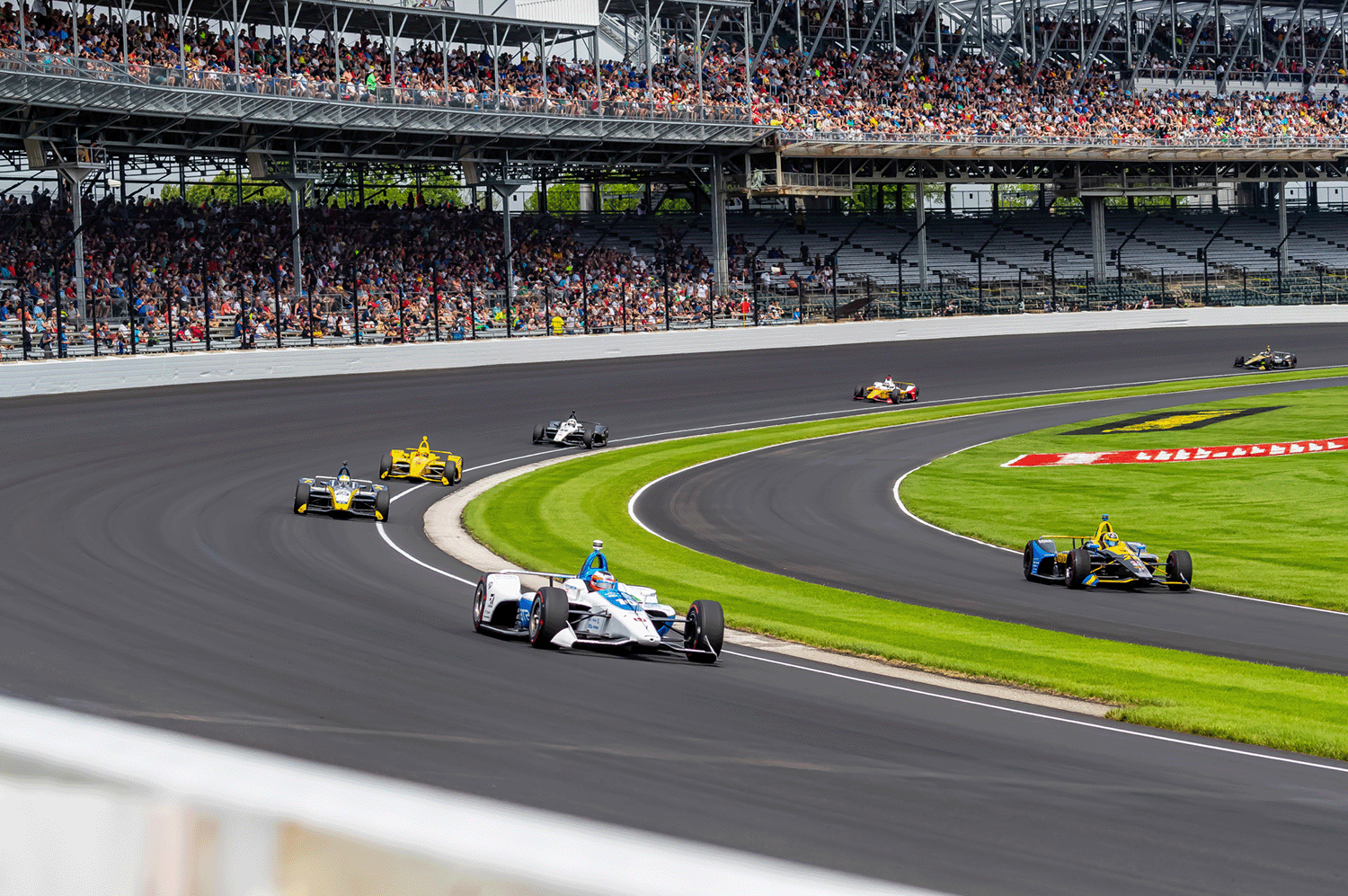Every year, the month of May transforms the tiny little town of Speedway, Indiana, into a hustling, bustling town full of racing’s biggest fans.
While cars can be found on the track the entire month of May, Memorial Day weekend sees an influx of around 300,000 (or more) racing aficionados – and they’re all there to bear witness to the “Greatest Spectacle in Racing.”
This year, the 106th Running of the Indy 500 will take place on May 29, 2022. By tradition, 33 drivers will take 200 laps (equal to 500 miles) around the Indianapolis Motor Speedway, much to the delight of their fans.
You know what else is delightful? These fun facts about the Indy 500’s history and traditions:
1. IMS Is the World’s Biggest Sporting Venue
You know that the Indianapolis Motor Speedway is big, but it’s hard to conceptualize exactly how big the place really is without some kind of reference. What’s it take to accommodate roughly 300,000 fans, all of the staff, the racers, their pit crews, reporters and others that are part of the show? You need a place that’s bigger than:
- The White House
- Yankee Stadium
- Vatican City
- The Roman Colosseum
- The Taj Mahal
In other words, IMS isn’t just big, it’s absolutely huge! Going to the Indy 500 is like stepping into an entirely different world, if only for a few hours.
2. It Came by the Nickname “The Brickyard” Honestly
There’s just a tiny little strip of bricks at the start/finish line and the rest of the track is asphalt, so why is IMS frequently called “The Brickyard” by fans?
Well, it goes back to the fact that the entire track was once hand-paved by bricks – roughly 3.2 million of them! (That was actually an upgrade from the crushed gravel and tar that was there before.) Asphalt gradually replaced the brick by 1937, and the final patch – minus the 36 inches left to mark the starting and stopping point for the races – was paved over in 1961.
That leads us to a bonus fact you can use to fascinate your friends: Winning racers and their teams have now adopted the tradition of “kissing the bricks” once the race is over to pay tribute to the track’s history. That tradition started after Dale Jarrett won the 1996 Brickyard 400 and has been part of IMS racing rituals ever since!
3. The Average Speeds of the Winning Drivers May Astound You
Back in 1911, Ray Harroun won the Indy 500 with an average speed of just 74.602 MPH. Given the fact that you probably see Kias going faster than this during your morning commute on the highway, that may not seem terribly impressive, but it was certainly impressive to viewers at the time.
The winning racer’s average speed didn’t break 100 MPH until Billy Arnold did it in 1930, but that doesn’t begin to compare to the speeds racers have hit since. Takuma Sato won in 2020 with an average speed of 157.824 MPH, but that pales in comparison to the record 187.433 MPH average of winner Tony Kanaan in 2013.
4. What’s the Deal with the Milk? It All Comes Down to Tradition
If you’ve ever watched the Indy 500 to completion, you probably noticed that the winning driver gets presented with a cold bottle of milk – and most opt to take a sip and pour the rest over their heads. Well, there’s one explanation for that peculiar ritual: It’s tradition!
Sports enthusiasts of all kinds are big believers in rituals and traditions, and the ritual with the milk started way back in 1936 when winning racer Lous Meyer asked for a cool glass of buttermilk to celebrate. The quirky request struck a chord with spectators, and it’s been a ritual carried on ever since.
5. Don’t Believe in Curses? You Might After You Read This
Mario Andretti is, arguably, one of the biggest names in racing to ever live – and others in his family have carried on his legacy with a great deal of success. The only place they haven’t had much luck is at the Indy 500.
It’s true that Mario won the race from the second starting position in 1969, and he’s the first driver to ever break the 200 MPH barrier on the Speedway – but bad luck has plagued the Andretti family on the track for decades. For example, in 1972, Mario wrecked in Turn 3 and finished 30th. A year later, he ran out of gas with just six laps to go. In 1981, he endured the frustration of ending the race in controversy, just behind Bobby Unser. A day later, Unser was disqualified from the win, and Mario got the trophy – only to lose it again four months later when Penske won their appeal.
It gets worse: In 1992, Mario and his son, Jeff, both left the track with broken bones. Son Michael lost a massive lead on Lap 189 when his fuel pump died, and nephew John ruined his chances for a win by hitting a pile of tires at a pit stop.
The so-called “Andretti Curse” on the Speedway has become the stuff of legends – so if there’s an Andretti on the track, you may want to watch closely.
6. There Are Dozens of Places to Visit All Around IMS
What if you can’t get a ticket to watch the actual race this year? Well, you can still soak up the excitement all around Speedway by checking out the local attractions. Some of the big ones include:
- Speedway Indoor Karting (where you can race a car yourself)
- Foyt Wine Vault (founded by Indy legend A.J. Foyt)
- Indianapolis Motor Speedway Museum (where you can learn more about the sport’s history)
There are also tons of restaurants, an antique mall, a brewery, art shops and parks to explore.
If you haven’t already started planning your trip to Speedway this year, why are you waiting? Get the car packed, the engine ready, get set – and go!




